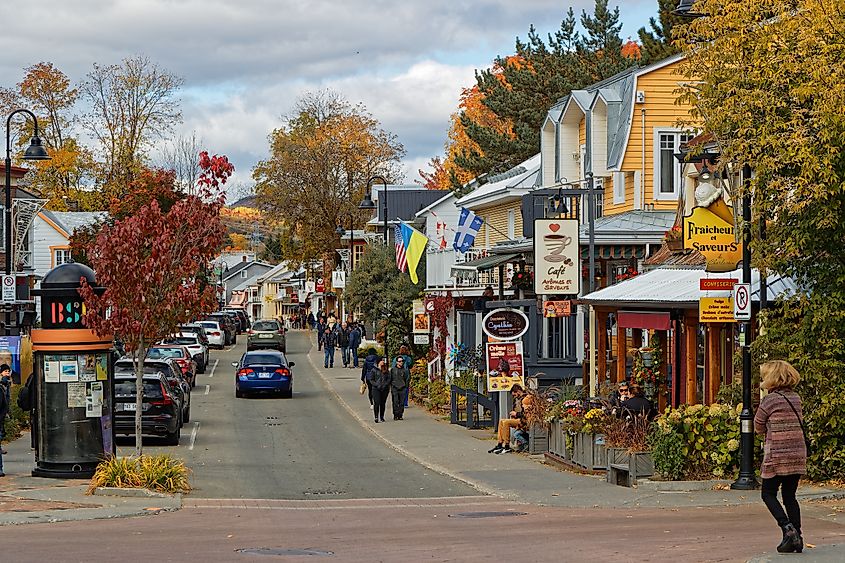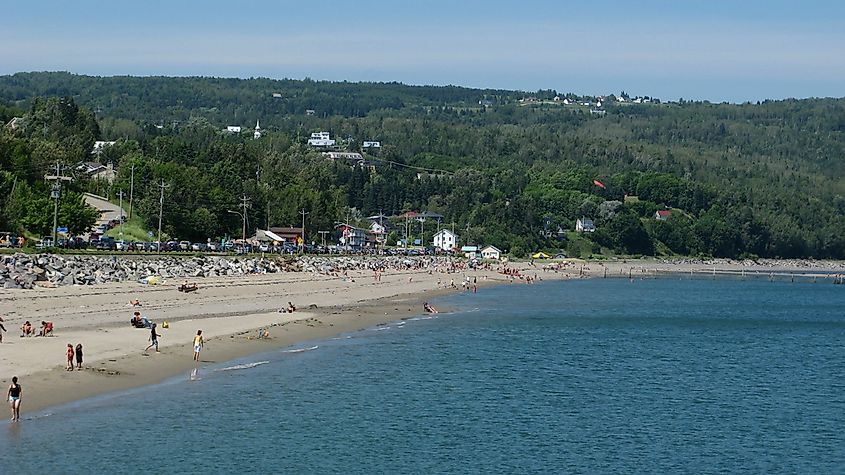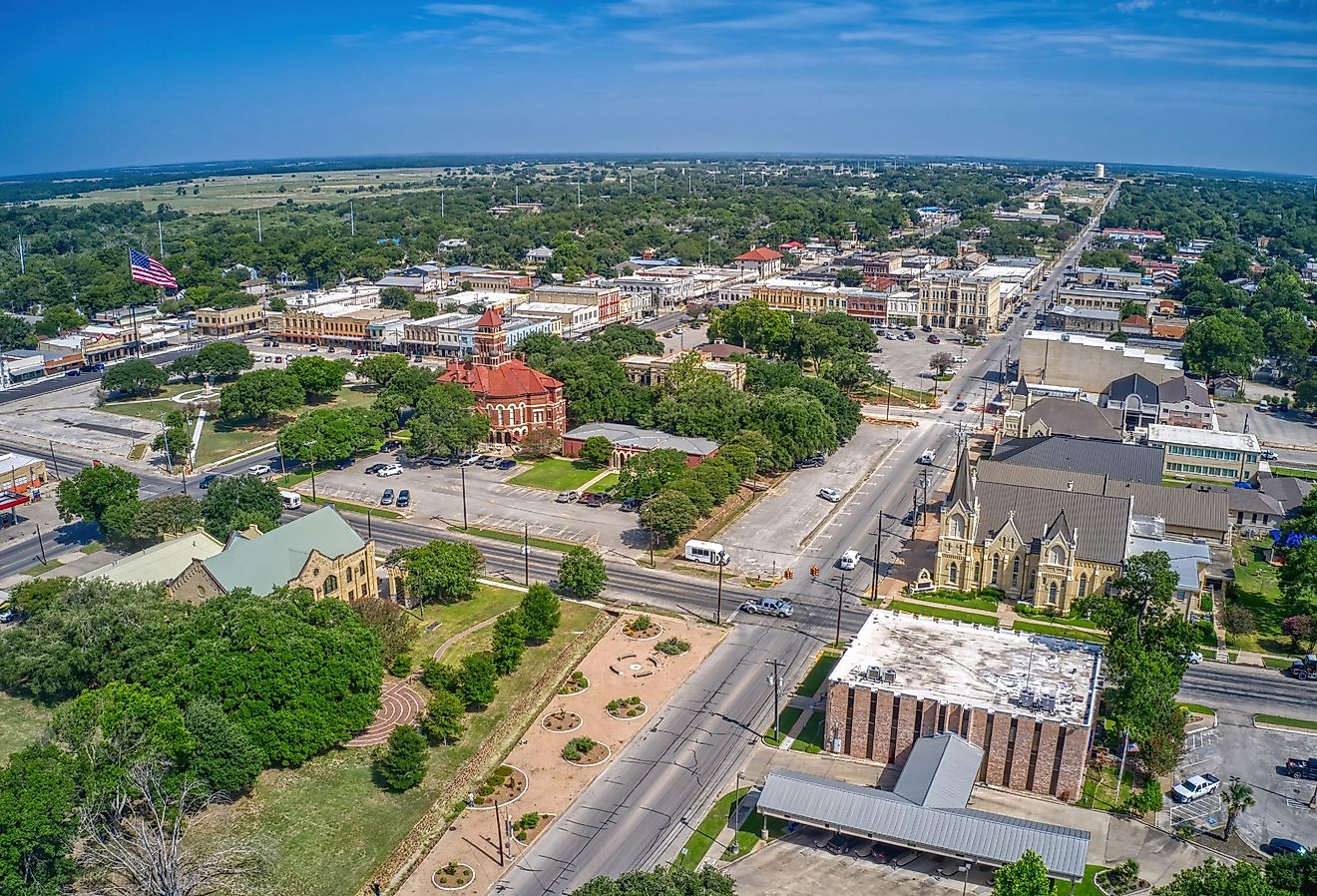
7 Welcoming Towns to Retire in Quebec
Quebec is the largest province in Canada by area, covering a massive 595,391 square miles. Nicknamed "La Belle Province" for its spellbinding beauty, diverse landscapes, and rich cultural heritage, Quebec is consistently ranked as one of the safest and most beautiful provinces in the country, making it an ideal retirement destination to relish your golden years. More importantly, this French-speaking province is considerably more affordable than Ontario and British Columbia, which have struggled with rising living costs over the years. This article will explore several towns that are welcoming to retire in Quebec.
Baie-Saint-Paul

Starting off the list is the town of Baie-Saint-Paul. Despite its small size, this tight-knit community is home to a thriving art scene; Rue St. Jean Baptiste, one of several streets in the downtown area, boasts more than 10 art exhibits—including the renowned Iris Art Gallery, where you can see collections from 98 artists, with many of the pieces highlighting Quebec's breathtaking natural features. While seeing paintings of the town is an experience, nothing beats a scenic train ride on the Charlevoix Train along the mesmerizing St. Lawrence River. The fee varies depending on your preference for seeing mountains or the river. As for your healthcare needs, the Baie-Saint-Paul Hospital offers comprehensive medical services to ensure your well-being and vitality, boasting a litany of positive feedback on Google Reviews. Making this town your home will require an investment of $543,400 based on Realtor's latest data. Although significant, it is a discount of almost $275,000 compared to what you would pay for an average home in Ontario and $395,000 less than in British Columbia.
Rimouski

Fancy yourself a town with gorgeous waterfront views? Rimouski is calling your name! This town is a cultural hub, hosting several festivals and events throughout the year, including the lively Les Grandes Fêtes TELUS festival, which welcomes thousands of music lovers yearly to rejoice and enjoy several musical genres. There are endless points of interest in and out of the area to explore in Rimouski, such as the iconic Pointe-au-Père lighthouse, Beauséjour Park, and Canyon des Portes de l'Enfer hiking area. The latter offers calendar-worthy canyon views, that are blanketed in lush trees with a gleaming river flowing in the middle. The cost of living in Rimouski, in line with the Economic Research Insitute (ERI), is nine percent lower than the national average—while median rent costs $725 based on CMHC's estimates.
Magog

Stunning lakeside views? Charming art vibes? All checked! Magog is an outdoor enthusiast's dream thanks to its proximity to Lake Memphremagog and Mount Orford. The former can be experienced through boats, kayaks, or several tranquil (and free) beaches. The latter is among the tallest mountains in Quebec, making it an excellent ski destination. Other popular activities in the area include hiking, camping, and witnessing the metamorphosis of the landscapes and vibrant colors during the fall months. Lastly, Magog is home to the annual "Festival des Vendanges," where locals and visitors alike celebrate the town's regional food and arts scene with public exhibits and vendors. Aside from Magog's lively events and welcoming community, the town is also home to a hospital, several museums, and art galleries, including the esteemed Maison Merry and Musee International D'Art Naif. Retiring in this quaint town costs on average $1,450 for a one-bedroom apartment, while single-family homes cost $391,300 based on Realtor's latest data.
Tadoussac

Not many towns can claim the title of being among the oldest European settlements in Canada, but Tadoussac can! It was 425 years ago when this town was first established by French explorers, led by Pierre de Chauvin and François Gravé Du Pont. Presently, Tadoussac is a serene village laden with natural beauty and friendly town folks. Unbeknownst to most, this town is also ranked as a prime whale-watching spot, where you can witness the majestic gentle giants through one of several tours, including Croisières AML and Tadoussac Autrement—make sure to bring your binoculars and cameras to capture the once-in-a-lifetime opportunity to view them. Other notable points of interest in the area include the Saguenay Fjord National Park, Marine Mammal Interpretation Centre, and Chapelle de Tadoussac, which stands as the oldest surviving wooden church in North America. To make this peaceful town your dream retirement destination, homebuyers can expect to pay $543,400 based on Realtor's latest figures.
Saint-Sauveur

Saint-Sauveur is home to one of the world's largest night skiing operations in Canada. Experience the unique sensation of speeding down the hills underneath the stars at Sommet Saint Sauveur. The resort also features restaurants, lodges, and monthly events with different themes. The town is also known for its pedestrian-friendly streets, with several shops and cafes, most of which are located on Rue Principale (Main Street). Additionally, residents of Saint-Sauveur have access to several medical clinics and hospitals, a crime rate 57% lower than the national average, and, best of all, affordable living—drawing from CMHC's figures, average renters here pay only $1,066. However, those in search of single-family homes can expect to pay around $638,900 based on Realtor's data.
Sherbrooke

Nicknamed "Queen of the Eastern Townships," Sherbrooke is distinguished for its stellar cultural, economic, and educational contributions to the region. Home to two major universities, numerous festivals, and a wide range of delectable eateries to choose from, retiring in Sherbrooke is nothing short of a treat and privilege. Explore the natural beauty of the area with a stop at Mont-Bellevue Park, located conveniently in town and spanning almost 500 acres; whether your cup of tea is a rejuvenating autumn hike or a thrilling ski session during winter, Mont-Bellevue Park has you covered. Additionally, the park offers breathtaking summit views, so be sure to bring your camera to capture scenic photos once you get to the top. And if you're into the arts, the Sherbrooke Museum of Fine Arts boasts over 4,600 pieces inside a vintage building located on Dufferin Street. While Sherbrooke is slightly expensive, it offers considerable value given the extensive amenities residents enjoy on top of the area's natural features. According to Century21, home prices cost $486,731 as of June 2024, while median rent across the board costs $1,290 monthly.
Saint-Irénée

Capping off the list is the charming town of Saint-Irénée. Known for being a quiet haven, this community offers residents the luxury of year-round beach access and the world-class Domaine Forget de Charlevoix, a premier music and arts center. However, it's hard for anything in the area to beat the Charlevoix impact structure—a 33-mile-diameter area where scientists believe a large meteorite struck about 470 million years ago. Remarkably, the evidence of this ancient impact is still visible today through unique geological formations. After your outdoor adventure, immerse yourself in the rich cultural experiences at Domaine Forget de Charlevoix, a non-profit organization where music and the arts come to life in monthly events, like the Domaine Forget International Music Festival, which features over 30 concerts with artists stemming from a wide array of genres. And since Saint-Irénée is in proximity to the St. Lawrence river, explore the serene Saint-Irénée Beach, a picturesque gem offering top-notch views of the grand river. The beach is also a prime spot for picnics, beach volleyball, and beachcombing through the soft sand. According to the latest figures from Realtor, the average cost of homes is $543,400.
In conclusion, these seven welcoming towns all offer unique value and merits for potentially becoming your dream retirement town. Whether it's the artistic community of Baie-Saint-Paul or the scenic lakeside views of Magog for nature lovers, retirees can find welcoming communities with warm hospitality in all these Quebec towns, with the added bonus of being able to enjoy affordable living costs and access to essential services.











